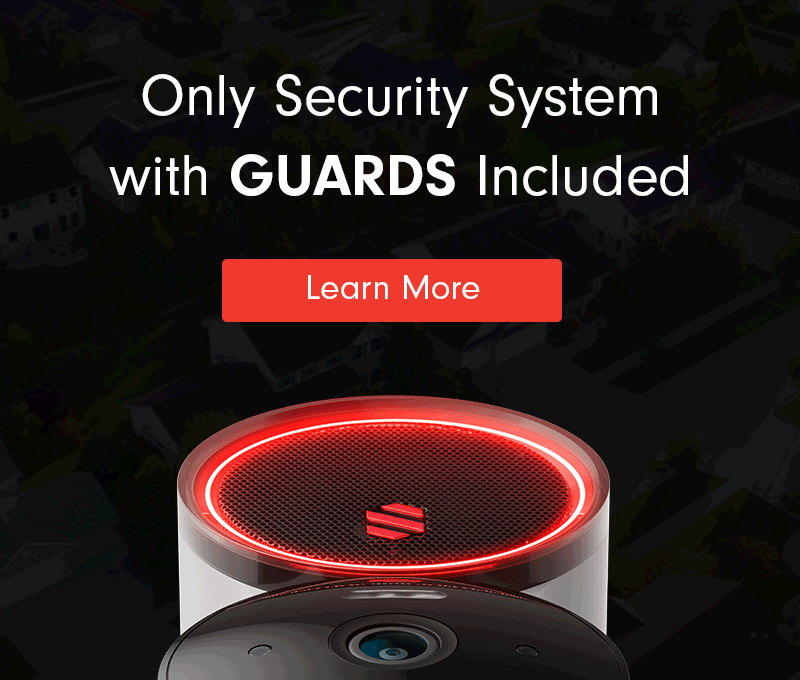How to Improve Community Safety and Prosperity

How Does Community Safety Affect Your Finances?
The relationship between community-wide security and your financial well-being may not be inherently obvious. However, keep in mind that systemic changes have systemic results. Investing in safety can have a meaningful impact on the entire community’s financial standing.
Economic Prosperity
Building a prosperous community is a complex end goal with many contributing factors. These include increased investment and business development, which help lower crime rates. In turn, this creates a safer environment that’s more attractive to property owners, businesses, and investors. It’s a truly symbiotic relationship. Companies are more likely to establish or expand operations in areas with lower crime rates, leading to increased economic activity and job creation.
More Equity for Property Owners
Improved property values are often a direct result of lower crime rates. People are willing to pay more for homes and commercial properties in safe neighborhoods. A Trulia poll found that more than half of parents would pay above the listing price to live in their ideal neighborhood, with 80% listing safety as the most important factor. As property values increase, homeowners’ equity grows, and the overall wealth of the community rises.
More Tourism Dollars
A safe community attracts tourism and spurs local spending. Visitors are more willing to explore and spend money in areas where they feel secure. This can boost local businesses like restaurants, shops, and entertainment venues, contributing to the local economy.
Investment in Critical Services
Cost savings on law enforcement is a substantial benefit to communities with lower crime rates. With less crime to contend with, these municipalities can spend less on law enforcement, criminal justice, and public safety measures. Governments can then allocate resources to other important initiatives, such as education, infrastructure, and social services.
Good Environment for Businesses
Businesses in low-crime areas also face fewer security-related costs, such as expenses associated with theft prevention, security personnel, and insurance premiums. With a stronger bottom line, businesses are more financially stable and able to invest in growth or offer lower prices.
Positive Reputation
A community with a reputation for safety attracts businesses, investors, residents, and visitors. All of these entities contribute to the local economy. A community’s good image can also foster a sense of pride and belonging, encouraging residents to stick around for a long time and support local businesses and organizations.
In short, lower crime rates create a more conducive environment for economic prosperity by attracting investment, fostering business development, increasing property values, and improving everyone’s quality of life. This, in turn, creates a positive cycle of economic growth and community well-being.
How Can You Improve Community Safety?
The surest way to make a community safer is to prioritize collaboration. Be intentional about fostering cooperation among other residents, law enforcement agencies, and local authorities and organizations. Next, we explore various collaborative efforts that can lead to successfully preventing crime at the community level.
Crime Prevention Through Environmental Design (CPTED)
An innovative and highly effective approach, CPTED seeks to limit criminal activity by reshaping the built environment. It proposes the intentional design of spaces, architecture, and landscaping to deter potential offenders. Use the five pillars of CPTED to improve community safety proactively.
- Natural Surveillance: Design spaces (or request designs for common spaces) in a way that maximizes visibility. Examples include good streetlights, low bushes, and a residential street with ample windows facing the sidewalk. Clear sightlines dissuade criminals, who fear that someone might notice and identify them.
- Access Control: Seek to restrict unauthorized entry into private properties or other sensitive areas. This could include physical barriers such as fencing, gated entries, or even strategically positioning entryways.
- Territorial Reinforcement: Encourage everyone to show pride of ownership not only in their private property but also in shared community property. This might involve activities like creating community gardens, visually defining property lines, or starting a litter pickup program. Criminals are less likely to strike a location that has a hands-on owner.
- Activity Support: The goal of this pillar is to encourage the legitimate use of spaces. Put ample equipment in parks. Plan events and gatherings in shared community spaces. When people are using a location for positive purposes, criminals steer clear.
- Maintenance: Regular upkeep is crucial in sending out a strong message against crime. Clean, well-maintained spaces signify that residents are vigilant and care about their community. Rally your neighborhood to repair broken amenities, keep up on landscaping, and so on—or establish an HOA and pool resources to pay for these services.
As you can see, these pillars overlap quite a bit and can apply to both private and public property. The overall goal is for community members to care for the places they occupy and watch out for one another.
Neighborhood Watch Programs
Neighborhood watch programs mobilize community members against crime. At their core, these programs are about residents joining with local law enforcement agencies to ensure their neighborhood’s safety. Key objectives include:
- Enhance Communication: Establish a channel of communication between residents and law enforcement officials. This helps community members report suspicious activities promptly and expedites police response. Communication within the community is helpful, too—if your neighbors know who belongs on your street and who is a new face, they can send a quick call or message when something is amiss.
- Community Awareness: These programs often involve workshops or meetings where residents are educated about common crime trends, prevention strategies, and the importance of being vigilant. Your community will be prepared for a variety of scenarios.
- Regular Meetings: Periodic meetings offer an ideal forum for residents to voice concerns, share personal experiences, and work together to address local security issues.
A functional Neighborhood Watch program increases each member’s sense of “buy-in.” This community is theirs, and they will protect it.
Starting or managing a chapter is a straightforward process (see our Neighborhood Watch guide for details). Make it fun and easy to participate, and you’ll soon have a thriving program.
Police Outreach Initiatives
A community’s safety also hinges upon the relationship between its members and the law enforcement agencies. Police outreach programs should cultivate trust and foster cooperation between the police and the community. These programs might include:
- Community Policing: This model of policing is about law enforcement agencies interacting closely with community members to understand their concerns and collectively address issues. It helps foster mutual respect and cooperation.
- Educational Programs: These programs could range from personal safety workshops and seminars on cybercrime protection to drug abuse awareness campaigns. They empower community members with the necessary knowledge and tools to safeguard themselves.
- Youth Engagement: Programs for children and young adults, such as sports events, mentorship programs, and educational initiatives, can play a critical role in preventing youth crime. They also foster a positive lifelong relationship with law enforcement.
Reach out to your local police department to learn about what crime prevention programs and resources are available to you.
Technology and Innovation
In the digital age, technology has become a powerful tool against crime. The integration of innovative technologies can significantly boost community safety. Explore these offerings for your community.
- Surveillance Cameras: Cameras in key locations around the community not only act as a visual deterrent but also provide crucial evidence during criminal investigations. The police or city administration might operate cameras in public spaces, but residential surveillance cameras can add another set of eyes. Some communities even form public-private partnerships, offering homeowners incentives to provide crime footage access to the police. A surveillance system backed by security camera monitoring, like Deep Sentinel, ups the ante by putting live guards on the case to intervene when there’s trouble.
- Social Media Engagement: Social media platforms can be harnessed for circulating community information and updates about criminal activity, enabling efficient communication among residents. Your community might use a dedicated platform like Nextdoor or simply create a group or page on a platform that everyone already uses.
Other security tools that protect homeowners, such as smart lighting, can be useful at a community-wide level, too. Weigh your resources against the potential upside and ask around to see what technology your neighbors would like to implement.
Better Community Safety Means a Better Community
All of these efforts interconnect and can be beneficial to all involved. Collaboration is the key to increasing safety and security within a community. Achieve your goal of financial prosperity and security in your community by making connections with those around you and getting them involved.
Need a Solution that Prevents Crime?
Deep Sentinel is the only security technology that delivers the experience of a personal guard on every customer’s home and business. Visit deepsentinel.com or call 833.983.6006.

